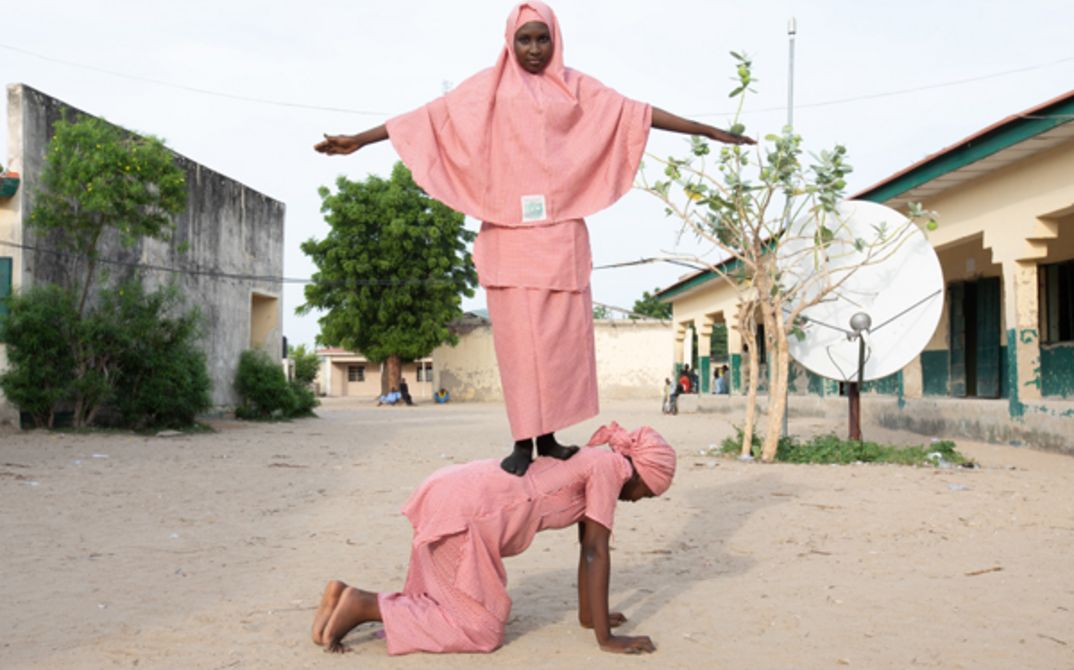“Words have meaning”, a phrase that perhaps sounds as if it does not know whether it is asserting something or longing for it, is part of the translated title of Chris Marker’s 1970 film ON VOUS PARLE DE PARIS: MASPERO, LES MOTS ONT UN SENS, which is screening as part of the anniversary program and the exhibition. A young man intervenes in a discussion between the film’s director and the author, publisher and bookseller François Maspero, who says that his role is to inform: “We are despite everything, militants in the sense that our practice always refers to a global context.”
Infinity minus Infinity, an installation by the Otolith Group composed of dance, music, lecture and animation explores a transhistorical space, in which the irreparable culpability of racial capitalism cannot be seen separately from the crimes of environmental policy . The way things are interwoven is the explicit theme of Filipa César’s collective installation QUANTUM CREOLE. With the help of different visual formats, the history of weaving is narrated as Creole code and thus as a story of subversion. Something similar happens because of the movements and games of a group of schoolgirls in Maiduguri, Nigeria, in Rahima Gambo’s short film TATSUNIYA II. In Hausa, the word “tatsuniya” means fable or riddle. The games of a group in northeast Brazil, but also their sign language, are what enable a counter-narrative in JOGOS DIRIGIDOS by Jonathas de Andrade. In his oeuvre, Koki Tanaka constructs social groups in order to observe them. In his first feature-length film ABSTRACTED / FAMILY, he unites four strangers with very complicated life stories under a Japanese roof. “I rethink the clicks and flashes that have cast us in history. And I flirt with liberation from the colonial gaze”: MATATA by Petna Ndaliko Katondolo (DRC) begins with a photo session which transforms into an intricate series of daydreams, with historical fragments, blurred projections and re-galvanizing images of the outside world.
The question of how certain pictures can be shown and their relationship with their past is the subject of PURPLE SEA by Amel Alzakout and Khaled Abdulwahed: “‘I see everything,’ she says (…) She speaks, she rages, and she films to beat being tired, being cold, the fact that help isn’t coming. To beat dying, just for something to remain.” (Merle Kröger) Part of the material, which is inseparably connected to the filmmaker who carried the camera on her body, found its way into a work by Forensic Architecture: SHIPWRECK AT THE THRESHOLD OF EUROPE, LESVOS, AEGEAN SEA: 28 OCTOBER 2015, a re-enactment of an accident that killed many migrants.
Letter from a Guarani Woman in Search of the Land Without Evil, an exhibition at SAVVY Contemporary, explores the archive of an audiovisual journey made by Patricia Ferreira (Pará Yxapy) who is arguably the most active representative of Brazilian indigenous cinema.
EXTRACTIONS by Thirza Cuthand looks at the extractive industries and their impact on Canada’s indigenous population. The film is part of a trilogy on show at the Canadian embassy in Berlin, which creates a space to connect the subject to queer perspectives. (stss)
Participating artists and filmmakers: Amel Alzakout/Khaled Abdulwahed, Ayreen Anastas/Rene Gabri, Graeme Arnfield, Caitlin Berrigan, Filipa César, Didi Cheeka, Thirza Cuthand, Jonathas de Andrade, Lucile Desamory/Glodie Mubikay/Gustave Fundi, Anja Dornieden/Juan David González Monroy, Ahmed Elghoneimy, Kevin Jerome Everson, Patricia Ferreira (Pará Yxapy), Forensic Architecture, Rahima Gambo, Margaret Honda, Laura Huertas Millan, Emily Jacir, Ken Jacobs, Ernst Karel/Veronika Kusumaryati, Petna Katondolo, Ayoung Kim, Jonna Kina, Vika Kirchenbauer, Chris Marker, Aline Motta, Maged Nader, Joe Namy, The Otolith Group, Grace Passô/Ricardo Alves Jr., Jenny Perlin, Riwaq, Koki Tanaka, Kika Thorne, Ana Vaz, Anton Vidokle, Anton Vidokle/Adam Khalil/Bayley Sweitzer, Akram Zaatari.
Curated by Stefanie Schulte Strathaus (Head Curator), Anselm Franke (Co-founder), Maha Maamoun, Ulrich Ziemons. SAVVY Contemporary: Anna Azevedo.
Opening dates: Betonhalle im silent green Kulturquartier: 19.2., 19.00, Canadian Embassy: 20.2., 16.30, SAVVY Contemporary: 19.2., 19.00.



